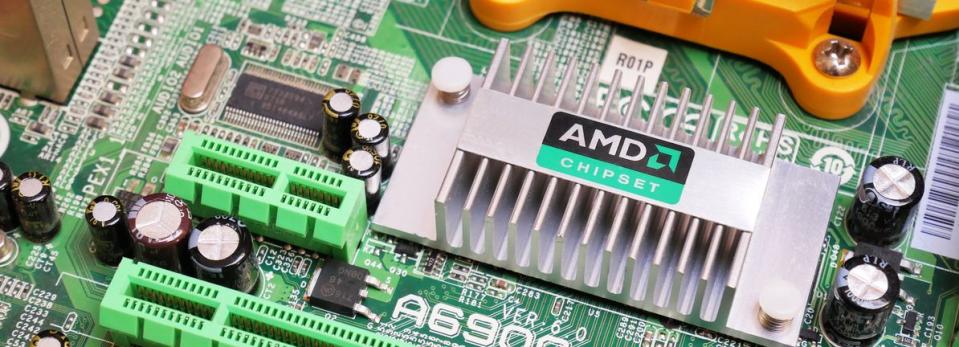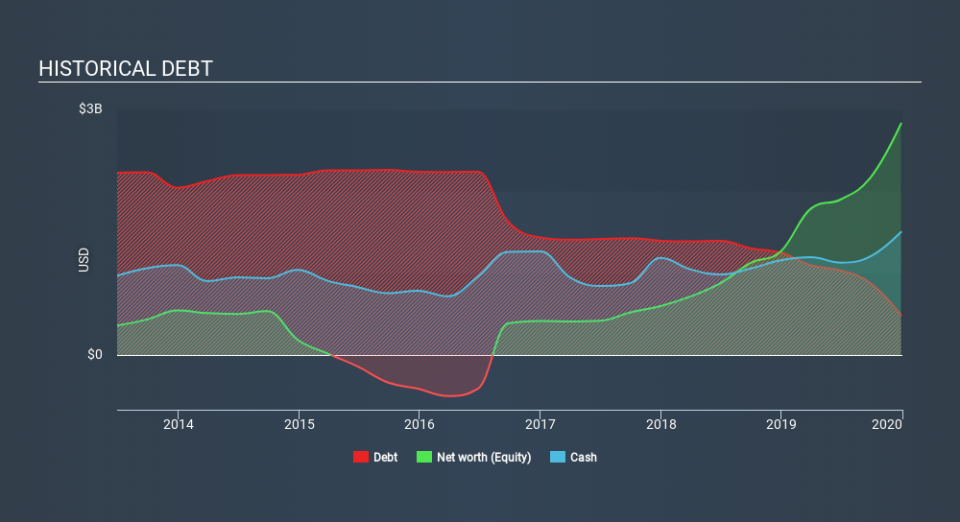Advanced Micro Devices (NASDAQ:AMD) Has A Pretty Healthy Balance Sheet

The external fund manager backed by Berkshire Hathaway's Charlie Munger, Li Lu, makes no bones about it when he says 'The biggest investment risk is not the volatility of prices, but whether you will suffer a permanent loss of capital. It's only natural to consider a company's balance sheet when you examine how risky it is, since debt is often involved when a business collapses. As with many other companies Advanced Micro Devices, Inc. (NASDAQ:AMD) makes use of debt. But is this debt a concern to shareholders?
Why Does Debt Bring Risk?
Generally speaking, debt only becomes a real problem when a company can't easily pay it off, either by raising capital or with its own cash flow. Part and parcel of capitalism is the process of 'creative destruction' where failed businesses are mercilessly liquidated by their bankers. While that is not too common, we often do see indebted companies permanently diluting shareholders because lenders force them to raise capital at a distressed price. Of course, plenty of companies use debt to fund growth, without any negative consequences. When we examine debt levels, we first consider both cash and debt levels, together.
See our latest analysis for Advanced Micro Devices
What Is Advanced Micro Devices's Debt?
You can click the graphic below for the historical numbers, but it shows that Advanced Micro Devices had US$486.0m of debt in December 2019, down from US$1.25b, one year before. However, it does have US$1.50b in cash offsetting this, leading to net cash of US$1.02b.
How Strong Is Advanced Micro Devices's Balance Sheet?
According to the last reported balance sheet, Advanced Micro Devices had liabilities of US$2.36b due within 12 months, and liabilities of US$842.0m due beyond 12 months. Offsetting these obligations, it had cash of US$1.50b as well as receivables valued at US$1.87b due within 12 months. So it actually has US$168.0m more liquid assets than total liabilities.
This state of affairs indicates that Advanced Micro Devices's balance sheet looks quite solid, as its total liabilities are just about equal to its liquid assets. So it's very unlikely that the US$66.7b company is short on cash, but still worth keeping an eye on the balance sheet. Succinctly put, Advanced Micro Devices boasts net cash, so it's fair to say it does not have a heavy debt load!
Also positive, Advanced Micro Devices grew its EBIT by 27% in the last year, and that should make it easier to pay down debt, going forward. When analysing debt levels, the balance sheet is the obvious place to start. But ultimately the future profitability of the business will decide if Advanced Micro Devices can strengthen its balance sheet over time. So if you want to see what the professionals think, you might find this free report on analyst profit forecasts to be interesting.
But our final consideration is also important, because a company cannot pay debt with paper profits; it needs cold hard cash. While Advanced Micro Devices has net cash on its balance sheet, it's still worth taking a look at its ability to convert earnings before interest and tax (EBIT) to free cash flow, to help us understand how quickly it is building (or eroding) that cash balance. In the last three years, Advanced Micro Devices created free cash flow amounting to 3.7% of its EBIT, an uninspiring performance. For us, cash conversion that low sparks a little paranoia about is ability to extinguish debt.
Summing up
While we empathize with investors who find debt concerning, you should keep in mind that Advanced Micro Devices has net cash of US$1.02b, as well as more liquid assets than liabilities. And it impressed us with its EBIT growth of 27% over the last year. So we don't have any problem with Advanced Micro Devices's use of debt. When analysing debt levels, the balance sheet is the obvious place to start. But ultimately, every company can contain risks that exist outside of the balance sheet. Consider for instance, the ever-present spectre of investment risk. We've identified 2 warning signs with Advanced Micro Devices , and understanding them should be part of your investment process.
At the end of the day, it's often better to focus on companies that are free from net debt. You can access our special list of such companies (all with a track record of profit growth). It's free.
If you spot an error that warrants correction, please contact the editor at editorial-team@simplywallst.com. This article by Simply Wall St is general in nature. It does not constitute a recommendation to buy or sell any stock, and does not take account of your objectives, or your financial situation. Simply Wall St has no position in the stocks mentioned.
We aim to bring you long-term focused research analysis driven by fundamental data. Note that our analysis may not factor in the latest price-sensitive company announcements or qualitative material. Thank you for reading.

 Yahoo Finance
Yahoo Finance 
